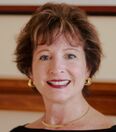- INTRO/SITE CONTENTS
- MY PUBLICATIONS
- BLOG
-
BOOK REVIEWS
- PLANNING A DIVERSE LIBRARY
- Surviving Loss & Abandonment
- Historical Fiction
- Sports Fiction
- Justice & Change Seekers
- Mental Health & Neurodiversity
- Latinx & Hispanic Characters
- Bullying
- Acts of Kindness
- STEM Novels
- Identity & Self-Discovery
- Winter Holidays
- Contending with the Law
- Family Relationships
- Stories of Black History
- Read Across America
- Verse Novels
- Immigrant/Refugee Experience
- Strong Resilient Girls in Literature
- Asian, Asian-American
- Novels featuring Contemporary Jewish Characters
- Multiple Voices & Multiple Perspectives
- Short Readings: Stories, Essays & Memoirs
- Graphic Novels
- Physical Challenges & Illness
- Characters Who are Adopted or in Foster Care
- Love & Friendship
- Memoirs
- STRATEGY SHORTS

NO MORE “US” AND “THEM”:
Classroom Lessons & Activities to Promote Peer Respect (Rowman & Littlefield)
No More "Us" and "Them" helps educators build classroom community, moving students from from seeing similarities to valuing diversity to reaching respect.
It is imperative that teachers build community in their classrooms and across academic teams and grades to make school a safe and supportive place for adolescents. It is also essential that teachers help their students acknowledge that they belong to a group together, that they are part of a “we” or “us,” and that any differences—diverse talents, backgrounds, experiences, and skills—only make us stronger and better. This feeling of community is especially important in the middle grades where the most bullying takes place.
A community is built cumulatively, one activity at a time. I wrote No More "Us" and "Them" to share what steps educators can take to create an atmosphere where students feel accepted, included, and valuable to themselves and to their peers. Examples of strategies, projects, and activities that I integrated into my ELA and Humanities curricula—and into those elementary, middle grade, and high school classrooms I visited to facilitate lessons and units—are included. In many cases, detailed lesson plans are described. Ideas and adaptations for other content areas—social studies, science, mathematics, foreign languages, physical education and health, art, music, as well as advisory or homeroom periods and team activities—are proposed to expand our students’ circle of “us,” to build community in our classrooms, our academic teams, and our schools. The aspiration is to make each of our students value each other and feel respected as a piece of the puzzle.
Besides the endorsements from educators whose opinions I value, there was a comprehensive review by literacy expert Vicki Spandel: see REVIEW
Classroom Lessons & Activities to Promote Peer Respect (Rowman & Littlefield)
No More "Us" and "Them" helps educators build classroom community, moving students from from seeing similarities to valuing diversity to reaching respect.
It is imperative that teachers build community in their classrooms and across academic teams and grades to make school a safe and supportive place for adolescents. It is also essential that teachers help their students acknowledge that they belong to a group together, that they are part of a “we” or “us,” and that any differences—diverse talents, backgrounds, experiences, and skills—only make us stronger and better. This feeling of community is especially important in the middle grades where the most bullying takes place.
A community is built cumulatively, one activity at a time. I wrote No More "Us" and "Them" to share what steps educators can take to create an atmosphere where students feel accepted, included, and valuable to themselves and to their peers. Examples of strategies, projects, and activities that I integrated into my ELA and Humanities curricula—and into those elementary, middle grade, and high school classrooms I visited to facilitate lessons and units—are included. In many cases, detailed lesson plans are described. Ideas and adaptations for other content areas—social studies, science, mathematics, foreign languages, physical education and health, art, music, as well as advisory or homeroom periods and team activities—are proposed to expand our students’ circle of “us,” to build community in our classrooms, our academic teams, and our schools. The aspiration is to make each of our students value each other and feel respected as a piece of the puzzle.
Besides the endorsements from educators whose opinions I value, there was a comprehensive review by literacy expert Vicki Spandel: see REVIEW
Proudly powered by Weebly

